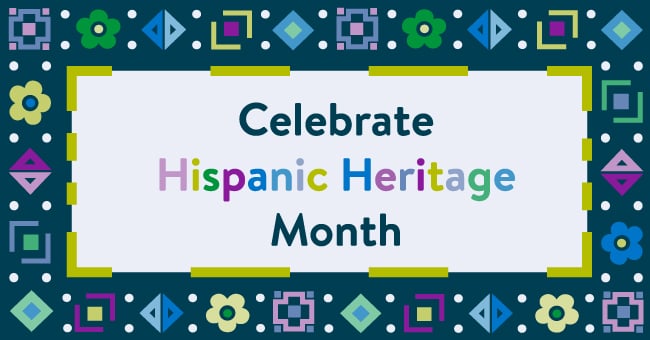
It's National Hispanic Heritage Month!
Each year, from September 15 to October 15, the history, culture, achievements, and contributions of Hispanic Americans are recognized and celebrated by communities, educators, children, and families all over the country. Celebration through education is one of the easiest—and most fun—ways to deliver authentic lessons that teach children to value and appreciate diverse cultures and experiences.
Why is Celebrating National Hispanic Heritage Month Important?
Addressing and embracing diversity and inclusivity in your classroom helps create a safe space where all children can learn and grow! Celebrating National Hispanic Heritage Month with the children in your classroom—whether they are of Hispanic or Latino heritage or not—is the perfect chance to discuss diversity and encourage children to make meaningful connections with one another as a classroom community.
Many teachers may be afraid of offending children and their families, causing them to ignore the diversity of their students and avoid addressing racial and cultural differences in the classroom. However, addressing and discussing racial and cultural differences encourages children to treat people who are different than them with kindness and reinforces their own self-love. Incorporating celebrations like National Hispanic Heritage Month into your classroom also instills within children the important lesson that their racial or cultural differences from their classmates should be celebrated and makes them the only one of them there is! When children see their traditions and cultures represented in the lessons they are learning and the classrooms experiences they are part of, they are being told they matter and their heritage matters, too.
How Can I Use This in My Lesson Plan?
Showcasing the rich cultures, traditions, and contributions of Hispanic Americans during National Hispanic Heritage Month is the perfect chance to bring children together through celebration.
Unlock new experiences, explore diverse cultures, and create an inclusive and welcoming classroom with these ideas for Celebrating Hispanic Heritage Month with children—P.S. these activities work year-round, too!
Share Stories
If you have Hispanic or Latino students in your classroom, encourage them to share their favorite stories and family traditions. If your classroom allows guests, you can also invite their grownups and families to share objects and stories about their heritage with the class. If you're able to take children on field trips, extend this idea by visiting local Hispanic Heritage Centers in your community or visiting a museum or performance where Hispanic practices, dances, traditions, and more are being shared.
Literacy and Language Connections
Add bilingual or Spanish-language books into your literacy center! Read these books with your students and, if reading a bilingual book, share both the Spanish and the English versions of the stories. Extend learning by encouraging children to act out or draw the stories they've heard, and share them with the class. You can also create a simple Spanish-language center in your classroom filled with bilingual toys and tools featuring basic Spanish vocabulary words.
Explore Through Sound
Music is the perfect way to celebrate the rich cultures of the countries celebrated during National Hispanic Heritage Month! Play Latin or Spanish-language music in your classroom and encourage children to wiggle, dance, jump, and shake to the beat of their own drum. You can also add instruments popular in Spanish-speaking countries to your classroom music center and have you very own Hispanic Heritage parade filled with maracas, güiros, flutes, conga drums, and more!
Head Outside
Create a heritage garden with your classroom community! Find a small area of land and plant staple crops found in many Spanish-speaking countries like corn, beans, squash, and peppers. When you harvest your crops you can host a classroom celebration where you taste-test what you have grown. Extend learning and explore your heritage garden year-round by discussing plant life cycles, learning more about the seasons, and promoting an appreciation for the earth.
